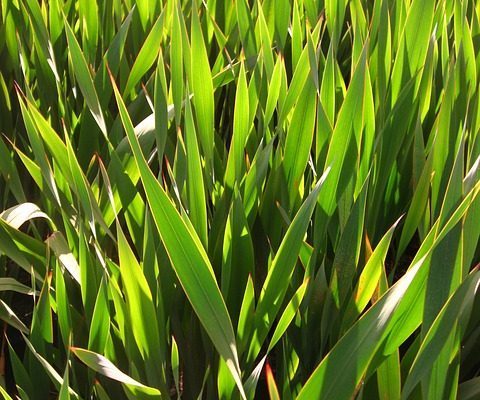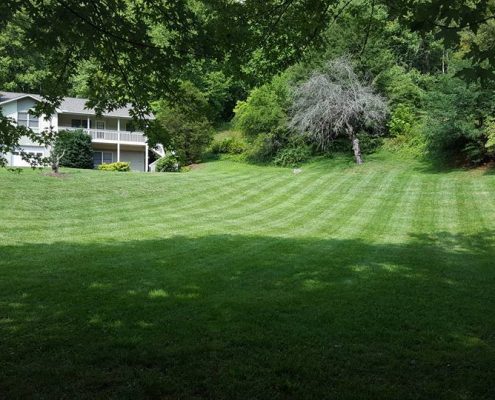To keep your lawn healthy and green these three lawn care treatments will give the lawn roots good health and maintenance. September is the time for dethatching, aerating and overseeding.
Lawn Care: Dethatching
Each time the lawn is cut particles of grass pieces gather and decompose on the top layer of the soil. Nutrients break down, and the thatch decomposes,  improving soil health. If the thatch doesn’t decompose fast enough due to prolific growth and numerous cuttings, a buildup begins to occur that could impede and create a barrier. This barrier could rob the soil of moisture and oxygen. Spots in the lawn will die if the turf isn’t getting sufficient hydration and oxygen. To alleviate this, dethatching is performed by lifting up this debris with a power rake and removed.
improving soil health. If the thatch doesn’t decompose fast enough due to prolific growth and numerous cuttings, a buildup begins to occur that could impede and create a barrier. This barrier could rob the soil of moisture and oxygen. Spots in the lawn will die if the turf isn’t getting sufficient hydration and oxygen. To alleviate this, dethatching is performed by lifting up this debris with a power rake and removed.
Lawn Care: Aeration
Aerating the soil with a machine will pull plugs of soil from the surface. The plugs are left to decompose on the soil’s surface. This treatment helps loosen compacted soils from heavy traffic and rains. The coring allows air and water to reach the root system.
Lawn Care: Overseeding
For a variety of reasons, lawns will weaken with heat stress, lack of soil health, thatch buildup, compaction or disease. Open patches of soil will result. Overseeding the lawn after these lawn treatments aids in prepping the soil so the seed can germinate.
Watering After Seeding
If Mother Nature doesn’t cooperate with adequate rain, a manual or automated method is recommended to get a lush, healthy, green lawn. To sprout, newly  sown grass seed needs to stay moist. Germination time for fescue blends ranges from 10-14 days. The soil that is in contact with the seed needs to stay at an even moisture in order not to dry out and prevent germination. Sprinklers with a broad range tied to automatic timers can be set up to water 5-10 minutes in the morning and again in the afternoon. Watering twice daily is essential for the seed to germinate and get a sufficient root system started. Be careful to avoid over-watering or creating puddles on the surface of the soil to prevent water carrying off the seed. This will create further damage to the existing grass by preventing available oxygen from getting to the roots. On a slope, it gets trickier as seed can easily move downward. Observe the amount of water pressure that is hitting the seed and if it is creating any movement and adjust. Consider the amount of shade and sun each area receives and adjust the watering needs accordingly. Ensure your watering sprinkler system is hitting all areas. Uneven watering will create uneven patches of growth.
sown grass seed needs to stay moist. Germination time for fescue blends ranges from 10-14 days. The soil that is in contact with the seed needs to stay at an even moisture in order not to dry out and prevent germination. Sprinklers with a broad range tied to automatic timers can be set up to water 5-10 minutes in the morning and again in the afternoon. Watering twice daily is essential for the seed to germinate and get a sufficient root system started. Be careful to avoid over-watering or creating puddles on the surface of the soil to prevent water carrying off the seed. This will create further damage to the existing grass by preventing available oxygen from getting to the roots. On a slope, it gets trickier as seed can easily move downward. Observe the amount of water pressure that is hitting the seed and if it is creating any movement and adjust. Consider the amount of shade and sun each area receives and adjust the watering needs accordingly. Ensure your watering sprinkler system is hitting all areas. Uneven watering will create uneven patches of growth.
These three lawn care treatments along with others throughout the year on a regular basis will be any gardener’s envy. If you are in need of these or other services we offer, Schedule A Consultation today.




